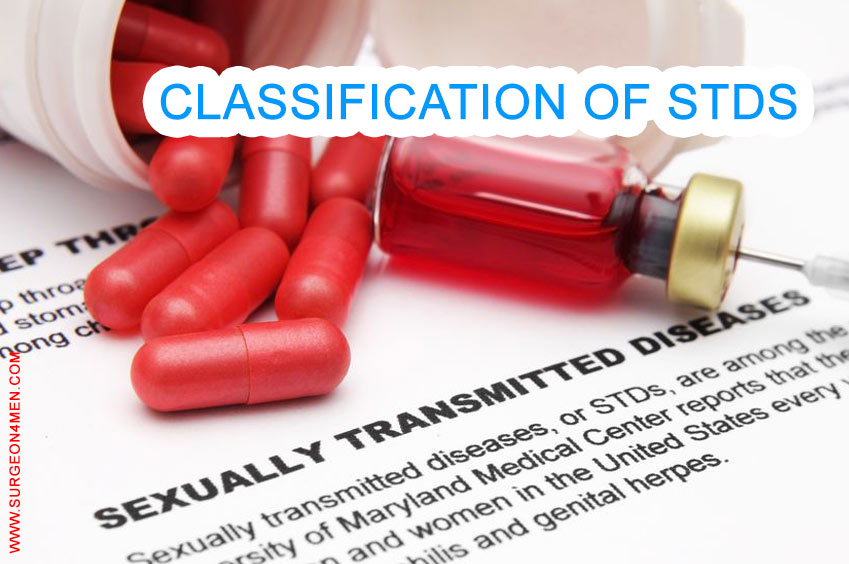Classification of STDs
Sexually Transmitted Diseases (STDs) often referred to as Sexually Transmitted Infections (STIs), are caused by different types of bacteria, viruses, and at times by tiny insects. STDs are passed from person to person through sexual contact with penis, vagina, rectum, or mouth. A sexual encounter with a person suffering from STDs can spread the disease. The symptoms of STDs vary from person to person and at times, people do not exhibit any symptoms at all. The health consequences of a number of STDs can be substantial. Though most of the STDs can be cured, there are some STDs which cannot be cured though their symptoms can be alleviated.
Sexually transmitted diseases can be classified into the following three categories:
-
Bacterial STDs:
- Chlamydia
- Gonorrhea
- Syphilis
- Vaginitis
- Pelvic Inflammatory Disease (PID)
-
Viral STDs:
Viral STDs are caused by viruses and can be passed from one person to another through sexual contact, non-sexual contact, from mother to baby during pregnancy, breast feeding, blood transfusion, and sharing intravenous equipment with an infected person. Some viral STDs can even be transmitted by sharing towels, straws, and other things that come in contact with the infected person. Sexually transmitted viral infections can affect multiple body parts at the same time. Common examples of viral STDs are listed below:
- Genital herpes
- Hepatitis B
- Human Papillomavirus Virus (HPV) or genital warts
- Human Immunodeficiency Virus (HIV)/Acquired Immunodeficiency Virus (AIDS)
- Hepatitis C (HCV)
A number of viral STDs persist life long and cannot be cured. These include Herpes, HIV infections, and Hepatitis B and C. Medical treatment can only help in alleviating the symptoms of these STDs.
-
Parasitic STDs:
- Intestinal parasitic infections
- Public lice
- Scabies
- Vaginitis
- Trichomoniasis
Intestinal parasites are often found in the form of one-celled organisms known as protozoa and tend to infect the intestines. Parasitic infections can be cured by taking prescription medications. Public lice and scabies can easily be cured by taking over-the-counter medications and prescription drugs. Trichomoniasis is only caused by a sexual contact with an infected person and can be cured by prescription medications. Vaginitis is very common and affects women of all ages. It can be caused by bacteria, viruses, yeasts, and other parasites.
References:
- “Sexually Transmitted Diseases Among American Youth: Incidence and Prevalence Estimates, 2000,” by Hillard Weinstock, et al. Published in January 2004, Volume 36, Issue 1 of the Perspectives on Sexual and Reproductive Health, accessed on 23 April 2015. Retrieved from: http://dx.doi.org/10.1363/3600604
